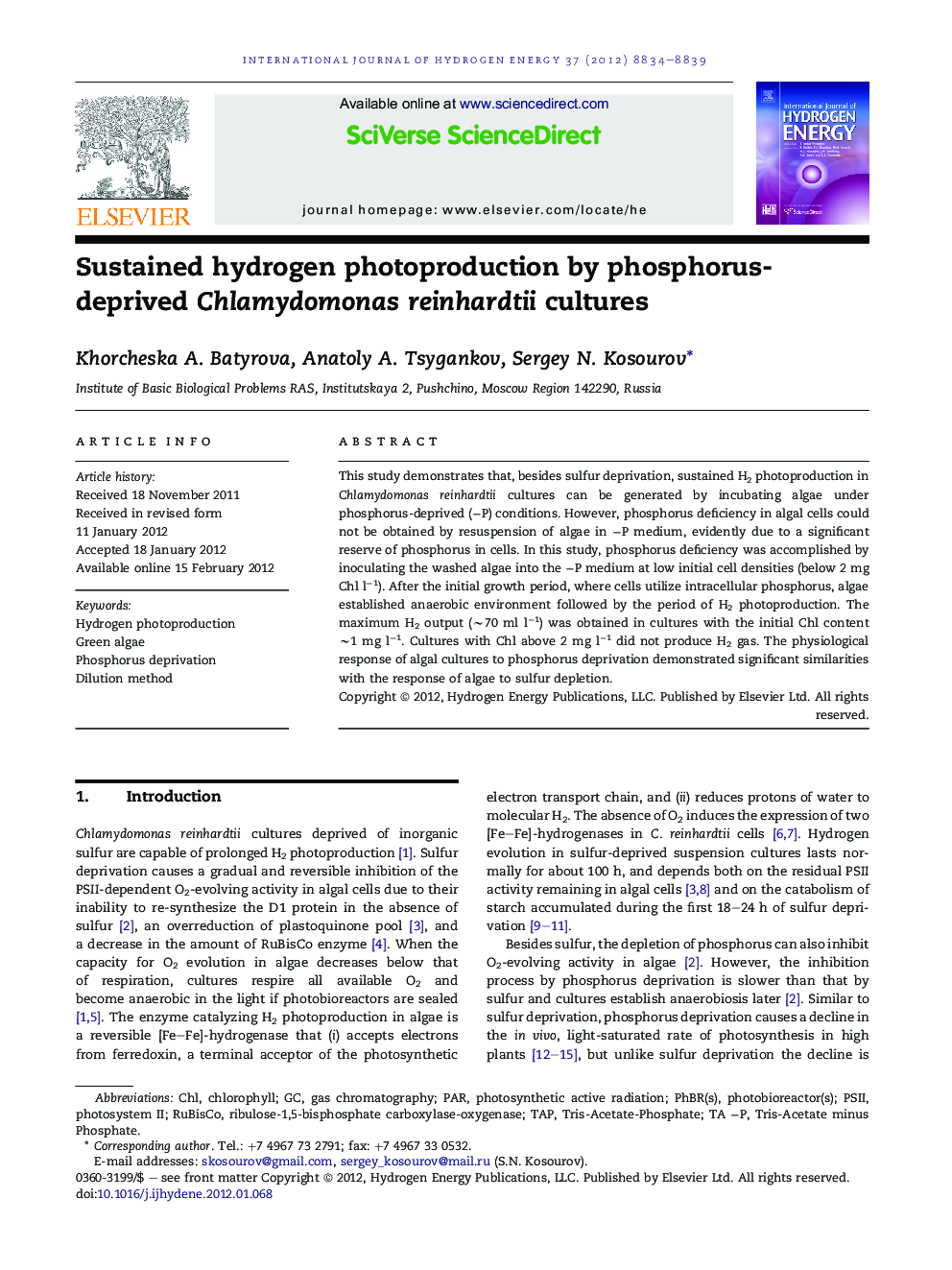| Article ID | Journal | Published Year | Pages | File Type |
|---|---|---|---|---|
| 1275385 | International Journal of Hydrogen Energy | 2012 | 6 Pages |
This study demonstrates that, besides sulfur deprivation, sustained H2 photoproduction in Chlamydomonas reinhardtii cultures can be generated by incubating algae under phosphorus-deprived (−P) conditions. However, phosphorus deficiency in algal cells could not be obtained by resuspension of algae in −P medium, evidently due to a significant reserve of phosphorus in cells. In this study, phosphorus deficiency was accomplished by inoculating the washed algae into the −P medium at low initial cell densities (below 2 mg Chl l−1). After the initial growth period, where cells utilize intracellular phosphorus, algae established anaerobic environment followed by the period of H2 photoproduction. The maximum H2 output (∼70 ml l−1) was obtained in cultures with the initial Chl content ∼1 mg l−1. Cultures with Chl above 2 mg l−1 did not produce H2 gas. The physiological response of algal cultures to phosphorus deprivation demonstrated significant similarities with the response of algae to sulfur depletion.
► Method of generating the bulk amounts of H2 gas from algae is described. ► Efficient H2 production requires the depletion of intracellular pools of phosphorus. ► Phosphorus-deprived algae showed significant similarities with sulfur-deprived.
